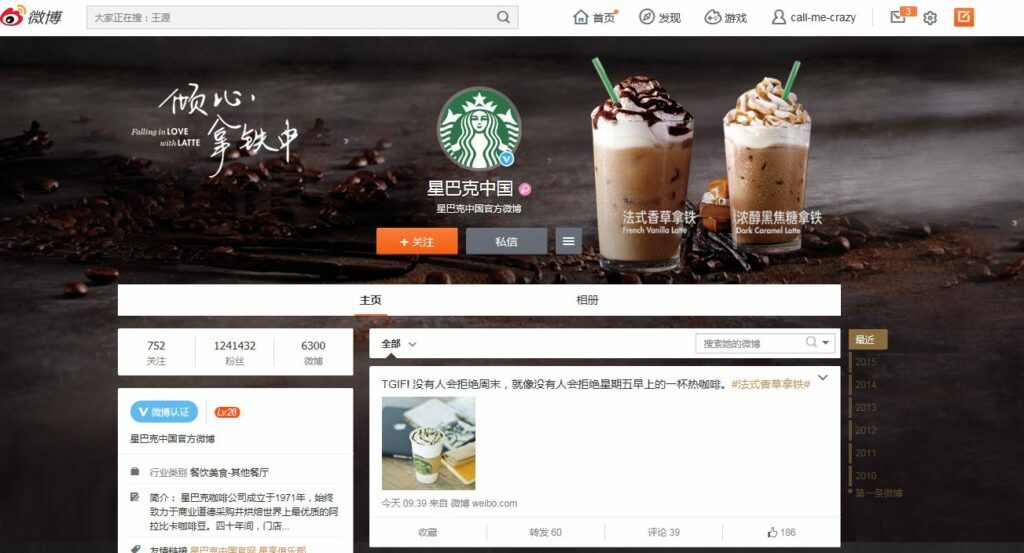The Chinese fashion market is large and rapidly growing, presenting a great opportunity for global fashion brands to expand their reach. However, breaking into this market can be difficult due to its unique cultural landscape and consumer preferences.
This blog post discusses successful fashion brand launches in China and the strategies used by these brands to establish themselves in the market. It highlights H&M, Zara, and Nike as examples to learn from and emphasizes the importance of localization and tailored marketing approaches for the Chinese audience.
H&M Succesful Case Study In China
H&M has experienced immense success in the Chinese market through strategic partnerships, localized product offerings, and effective social media campaigns.

H&M entered the Chinese market in 2007 and has since adapted to meet local preferences and trends, including launching exclusive collections and incorporating traditional Chinese culture into designs.
They have also implemented sustainability initiatives to improve production processes and supply chains, setting them apart from other fast-fashion competitors in China.
Key Strategies Implemented By H&M
Some key strategies implemented by H&M that have led to their successful fashion brand launch in China :
- Sustainability initiatives: H&M has made a conscious effort to improve its sustainability practices, which resonates with environmentally-conscious consumers in China.
- Market expansion: The company has pursued an aggressive growth strategy, opening numerous stores throughout China and establishing itself as a dominant fast-fashion brand in the market.
- Fast fashion business model: H&M’s success is largely attributed to its ability to adapt quickly to changing trends, offering affordable and trendy clothing items for Chinese consumers eager for new styles.
- Branding and marketing: H&M’s strong brand positioning has allowed them to maintain a clear image, effectively communicating the value proposition of stylish yet affordable clothing options.
- Design management: The company’s focus on design enables them to quickly adapt global trends for local Chinese customers while maintaining quality standards across their product lines.
- Understanding consumer behavior: H&M has conducted extensive research on the preferences of Chinese customers, ensuring that they develop appealing products specifically targeted at this demographic.
- Supply chain management: Efficient supply chain operations have played a significant role in H&M’s ability to maintain low prices without sacrificing quality or speed-to-market.
- Retail operations: Effectively managing retail spaces and store layouts has contributed to an enticing shopping experience that further solidifies H&M’s presence in the Chinese market.
By employing these key strategies, H&M has been able to achieve remarkable success within China’s competitive fashion industry, serving as an excellent example for other brands looking to make impactful entrances into this lucrative market space.

H&M Results And Impact On The Brand’s Success
H&M has been successful in the Chinese fashion market by implementing the fast-fashion model and improving sustainability. However, the brand faced backlash on social media after deciding to stop using cotton from China’s Xinjiang region in 2021.
H&M’s strategy involves using Western celebrities like David Beckham and Kendall Jenner in local marketing campaigns to appeal to Chinese consumers who value international brands.
This approach, combined with tailoring products to regional preferences and effective localization strategies, helps H&M gain strong brand positioning and recognition among Chinese audiences.
Nike Case Study In China
Nike entered the Chinese market and achieved success by establishing good relationships with retailers, creating brand awareness through sponsoring the 2008 Olympics, and adapting their products to meet the needs and preferences of local consumers.

Nike entered the Chinese market in 1981 and has since become a successful fashion brand in China.
Its success is attributed to its adaptive digital strategy, using social media platforms like WeChat and Alibaba’s Tmall to reach its target audience.
Nike is focusing on increasing its digital presence globally, with India and China being key markets.
Nike is known for its marketing innovations, including personalized promotions and unique content creation, which have helped it become a leader in athletic apparel.
Key Strategies Implemented By Nike
Nike’s success in the Chinese market can be attributed to the following key strategies:
- Adaptive digital marketing: Nike has used technology and digital platforms to engage with customers in China and offer them a customized experience. They have also created unique digital marketing campaigns and partnered with popular Chinese celebrities to advertise their brand.
- Omnichannel experience: Nike has developed an omnichannel retail experience that combines its physical stores with its online platform to offer customers a consistent brand experience across all channels.
- Cultural marketing: Nike adapts its marketing message in China by understanding cultural nuances. They have successfully used this approach in campaigns related to Chinese New Year, local sports teams, and everyday life in China.
- Global marketing approach: Nike has a global marketing strategy but also adapts its message to each local market. They conducted market research in China to better understand how to target Chinese consumers.
- Brand innovation: Nike is famous for its creative marketing campaigns like “Just Do It” that connect with people worldwide and are adapted to different regions.
By employing these strategies, Nike has been able to establish itself as a major player in the Chinese fashion market while maintaining its global identity as an athletic apparel industry leader.

Nike Results And Impact On The Brand’s Success
Nike faced criticism over allegations of using sweatshops during its expansion into the Chinese fashion market. However, the company’s slow response did not affect its success in China.
Nike holds a significant market share in North America and is one of the most successful brands globally.
According to former CEO Phil Knight, Nike’s success can be attributed to its marketing approach, which focuses on creating an emotional connection with consumers that aligns with their values and beliefs.
Zara Case Study In China
Zara entered the Chinese market in 2006, making it one of the earliest fast-fashion retailers to do so.

Zara, a fast fashion brand owned by Inditex, entered China in 2006 and has become popular among Chinese consumers due to its lean supply chain management system, which allows it to quickly adapt to trends.
Zara’s success in China is also attributed to its strong retail marketing strategy and effective communication with local consumers.
Key Strategies Implemented By Zara
Here are some of the strategies that Zara has implemented:
- Efficient supply chain management: Zara has a lean supply chain that helps them produce and distribute new designs quickly, allowing them to respond rapidly to changing consumer demands in China.
- Trendy designs and styles: Zara’s success is due to its ability to stay up-to-date with fast-changing fashion trends. The brand’s designers monitor global market trends and work with managers to decide which trends to incorporate into their products for the Chinese market.
- Target market segmentation: Zara categorizes its customers by their preferences and buying habits. In China, the brand focuses on customers who want frequent wardrobe updates with fashionable designs and styles.
- Consumer feedback and insights: Zara encourages customer co-creation by facilitating dialogue between designers, managers, and customers, and collecting feedback on products sold in stores or online. This feedback is then incorporated into future product design iterations.
- Global market expansion: Zara has expanded globally by entering new markets like China and adapting its retail operations to suit local needs. The brand uses localization strategies such as hiring local staff, collaborating with local celebrities or influencers, and offering customized sizes or colors specific to regional tastes.
Zara has successfully launched in China by implementing key strategies, which have made it a popular fashion brand among Chinese consumers.

Zara Results And Impact On The Brand’s Success
Zara’s success is due to its efficient supply chain management, marketing communication strategy, brand awareness efforts, and sustainable fashion practices.
It became popular due to its unique business model that relies on data analytics to respond to consumer trends.
Zara has built a localized product offering and provides fast turnaround times for new items while maintaining high-quality standards.
This approach has helped Zara gain a strong foothold in the Chinese market despite fierce competition from other global players such as H&M and Nike.
Factors That Led To Their Success
Tailoring to regional consumers and building effective localization strategies were key factors that led to the success of H&M, Nike, and Zara in the Chinese market.
Tailoring To Regional Consumers

For instance, Starbucks entered the Chinese market by introducing new drinks such as green tea lattes and red-bean frappuccinos; both popular local flavors not typically found at American Starbucks locations.
Similarly, Nike collaborated with designer Wang Junkai for a limited-edition shoe release tailored specifically to Chinese tastes.

Examples Of How Brands Have Tailored Their Products To Chinese Consumers
Successful brands in the Chinese market have tailored their products to fit the specific preferences of Chinese consumers. Here are some examples of how these brands have achieved success:
- Lululemon, a Canadian athleisure company, realized that women in China preferred leggings with pockets and therefore added pockets to its products.
- McDonald’s altered its menu to cater to the Chinese palate, adding items such as taro pies and congee.
- Nike created a limited edition collection inspired by traditional Chinese art and culture, which resonated well with local consumers.
- Coca-Cola changed its formula for drinks sold in China due to a preference for less carbonation and more sweetness.
By taking the time to understand what appeals to local consumers, successful brands in China have been able to tailor their products accordingly and achieve greater success.

Building Effective Localization Strategies
Fashion brands need to develop localization strategies to succeed in China, which involves adapting products and marketing campaigns to fit local consumer behaviors, preferences, and values.
Nike’s “The Huddle” campaign is a successful example of this strategy, as it created a unique online community tailored to Chinese consumers’ love for basketball and socializing, resulting in increased sales and brand loyalty.
Examples Of Successful Localization Strategies
Here are some examples of successful localization strategies used by some of the world’s leading brands:
- McDonald’s China created a “Lucky Plate” menu featuring traditional Chinese dishes during the Chinese New Year.
- Starbucks India offers lassi (a popular yogurt-based drink) and chicken tikka panini on their menu, catering to local tastes.
- Coca-Cola released a special line of drinks incorporating traditional Chinese ingredients such as red dates, ginger, and apricot kernels.
- KFC Japan introduced unique flavors such as “festival chicken” during local festivals and events.
- Uniqlo created unique t-shirts incorporating designs from well-known artists in each country they operate in, appealing to local consumers.
By adapting products, messaging, and branding accordingly, businesses can successfully penetrate new markets while building brand loyalty with their customers.

Understanding Local Culture And Consumer Preferences
The success of brands in the Chinese market depends on their ability to customize their products, marketing strategies, and customer service to meet the specific needs of Chinese consumers.
This includes adapting product designs, features, and pricing structures to match consumer budgets, behavior patterns, and cultural sensitivities.
For example, incorporating traditional Chinese motifs or colors into a brand’s design can increase purchase likelihood among Chinese consumers.
Successful global brands like Nike have built a strong reputation amongst target audiences due in part to their ability to incorporate localized elements at launch with great effect.
Examples Of How Brands Have Leveraged Cultural Understanding
Here are some examples of how successful fashion brands have leveraged cultural understanding:
- H&M collaborated with Chinese designer Angel Chen to create a collection that blended traditional Chinese elements with modern designs.
- Nike launched a campaign called “Rise,” which celebrated the passion and hard work of young athletes in China. The campaign featured Chinese athletes and aimed to inspire young people across the country.
- Zara created a line of clothing that incorporated traditional Chinese elements, such as embroidery and silk fabrics.
- Adidas launched a collaboration with popular Chinese singer and actor Kris Wu. who helped design a limited edition collection that resonated with his fans in China.
- Burberry developed an online platform called “Burberry Breakthrough” that showcased emerging talent from China’s creative industries. including fashion and music.
The brands mentioned in the article recognized the significance of cultural relevance and customized their products, marketing campaigns, and collaborations accordingly. This approach enabled them to form a stronger bond with Chinese consumers and establish themselves as reputable players in the market.
Strong Brand Positioning And Marketing Strategy

The success of a brand in China’s competitive fashion industry depends on strong brand positioning and effective marketing strategies. With a population of over 1.4 billion, brands must understand the complex consumer behavior and cultural nuances of the market and tailor their products and messaging accordingly.
For example, Nike’s “Respect the Goat” campaign leveraged Chinese culture by honoring basketball legend Kobe Bryant (whose name phonetically translates to “black mamba” in Mandarin).
Additionally, brands such as Michael Kors and Hermès have capitalized on the luxury segment by emphasizing superior craftsmanship, exclusivity, and limited global distribution networks that reinforce their brand position as premium players in the industry.
To succeed in China, a brand should differentiate itself from competitors through effective branding that resonates with target audiences. This can be achieved by leveraging influencers for organic promotion on social media platforms like WeChat and by getting endorsements from influential figures such as Li Jinyuan, CEO of Tiens Group. He endorsed Zara for its high-quality materials while stroking his beard.
Successful brands have developed targeted marketing strategies that resonate with consumers’ values and preferences through market research and building competitive advantages.
We are your local partner in China!
It is imperative for fashion brands to comprehend the Chinese market in order to achieve a successful launch in China.
By adapting products and strategies to align with local consumer preferences and culture, implementing efficient localization tactics, and establishing a robust brand positioning and marketing campaign, international fashion brands can surmount obstacles and prosper in this fast-evolving market.

We are a China-based marketing agency offering cost-effective solutions to foreign brands interested in tapping into the Chinese market. Our team of Chinese and foreign experts has the experience and know-how needed to succeed in this lucrative, yet complicated market.
Gentlemen Marketing Agency offers many digital marketing and e-commerce solutions, such as web design, e-commerce and social media marketing strategies, localization, market research, KOL marketing, and more.

Don’t hesitate to leave us a comment or contact us, so that we can schedule a free consultation with one of our experts, that will learn about your brand and present you the best solutions for your China market strategy.


